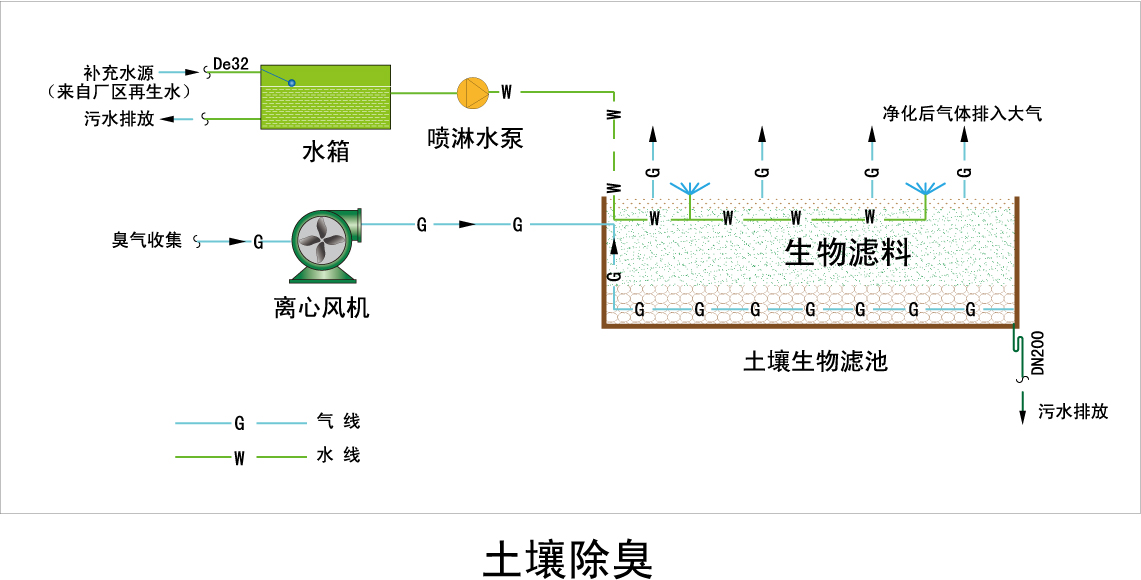
Low energy consumption, and low requirements for operation or management.
Environmental-friendly, with no secondary pollution.
Compatible with local landscapes.
Suitable for low concentration gas, as well as the odor treatment occasions of high requirements to the environment and landscapes.
Biological soil deodorization process can be mainly divided into three steps:
(1) Extracellular adsorption: when passes through the biological soil filters, the odor substance is adsorbed by the efficient functional microorganisms attached to the surface of the filler, the extracellular polymers and the enzymes produced by the metabolism.
(2) Biological absorption: odor substances adsorbed on the surface of microorganisms are transferred into the cells.
(3) Biological oxidation: odor substances are decomposed into non-toxic and harmless water, carbon dioxide or inorganic salts in the metabolic cycle of microorganisms. Soil filler provide inorganic salts, minerals and partial carbon sources for microorganisms to promote reproduction of microorganisms.
